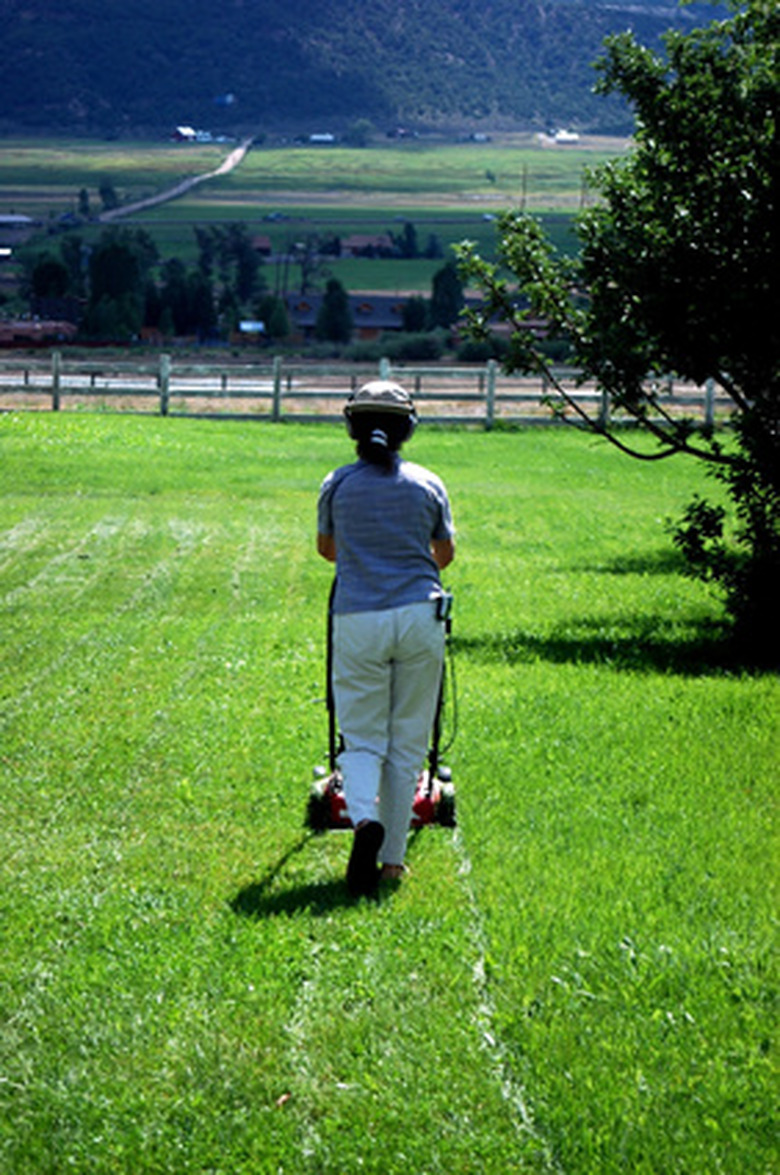Centipede Vs. St Augustine Grass
Centipede and St. Augustine are two types of grass that are popular in the southern United States, South America and many other places with mild winters. Decide whether St. Augustine grass or Centipede grass is best for your lawn by understanding the pros, cons, strengths and weaknesses of the two types of lawn grass.
Identification
St. Augustine grass is popular in the southern United States. It is often used on golf courses in the outer areas called "the rough." Centipede grass is also used for the rough on golf courses, but is most often seen as the grass on highway dividers, roadside landscaping and in other areas where a low-maintenance grass is needed.
Traffic
Neither Centipede grass nor St. Augustine grass is tolerant to foot traffic. They are best for decorative lawns, and should not be used in athletic fields, playgrounds, walkways, or home yards intended for lots of activity.
- Centipede and St. Augustine are two types of grass that are popular in the southern United States, South America and many other places with mild winters.
- Centipede grass is also used for the rough on golf courses, but is most often seen as the grass on highway dividers, roadside landscaping and in other areas where a low-maintenance grass is needed.
Maintenance
St. Augustine grass requires frequent fertilizing to stay green. It also needs frequent mowing and should be kept at a height of 2 to 4 inches to keep it free of weeds, according to "The Lawn Bible" by David R. Mellor. Centipede grass is considered a low-maintenance grass. It only grows to about 4 inches tall and generally only requires annual fertilization, proper watering and periodic mowing to keep it healthy.
Temperature
Centipede grass and St. Augustine grass are both intolerant of the cold. In places with evening temperatures below 65 degrees, St. Augustine grass is at risk of developing brown patch disease, a fungal disease that leaves rotting brown patches on the grass. Centipede grass can tolerate moderately low temperatures, but will die completely if faced with a significant frost.
- St. Augustine grass requires frequent fertilizing to stay green.
- In places with evening temperatures below 65 degrees, St. Augustine grass is at risk of developing brown patch disease, a fungal disease that leaves rotting brown patches on the grass.
Considerations
Centipede grass and St. Augustine are warm season grasses and should be planted in early summer. Centipede grass usually offers a more polished-looking lawn than St. Augustine, which can appear rustic and a bit messy.
References
- Texas Cooperative Extension: St. Augustine Grass; Richard R. Duble
- Texas Cooperative Extension: Centipedegrass; Richard R. Duble
- "The Lawn Bible"; David Mellor; 2003
